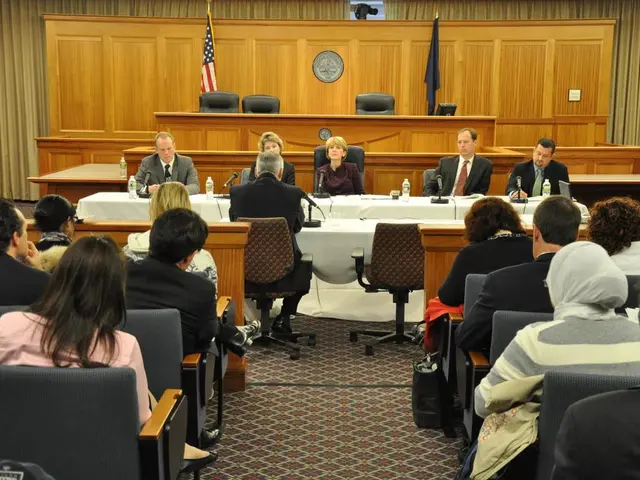Syria Strategy Unclear After Decade of Disorderly Approach
In the heart of the Middle East, the relationship between the United States and the Syrian Democratic Forces (SDF) has been a significant factor in the region's complex conflict.
The US first established relations with the YPG, the military backbone of the SDF, in 2012. This partnership proved decisive in the battle for Kobani, effectively preventing the fall of the city to the Islamic State. The US military deepened its ties with the YPG, maturing the group into a broader and more inclusive force, the SDF.
However, the US's support for armed Islamist opposition groups, in partnership with Turkey, Qatar, and Saudi Arabia, beginning in 2012, is widely regarded as the US's single greatest blunder in Syria. This decision helped turn Syria into a proxy war between the United States and Russia and caused untold misery to the Syrian people.
The SDF went on to liberate much of northeastern Syria from the Islamic State, including Raqqa in October 2017. The US Army has built deeper ties with the SDF since 2015, playing a key role in liberating about one-third of Syria from the Islamic State organization.
The raid that resulted in the death of Islamic State leader Abu Ibrahim al-Qurayshi came after a prison break in Hasakah, Syria, which was the largest US combat involvement with the Islamic State since the downfall of the group's self-proclaimed caliphate three years ago. The SDF provided crucial intelligence in the hunt for both Abu Bakr al-Baghdadi and al-Qurayshi.
Despite these successes, challenges remain. Significant numbers of militants managed to escape from the Hasakah prison after more than a week of fighting. Camps such as al-Hol host over sixty thousand women and minors, for the most part the wives and children of fighters. General Kenneth Franklin McKenzie has repeatedly warned that al-Hol and other such camps may give rise to the next generation of Islamic State fighters.
The US partnership with the SDF represents a highly promising example of how the United States can contribute to peacebuilding and grassroots democratization in the Middle East. The SDF's autonomous administration is based on democratic principles such as secular rule, freedom of religion, and equal rights.
However, the relationship between the US and the SDF is not without tension. Turkey continues to violate the ceasefire on an almost daily basis, and Erdogan regularly threatens new military interventions against the SDF. The US currently has approximately nine hundred troops in the Autonomous Administration of North and East Syria.
The United States needs to work closely with the SDF, alongside local tribes, on reconciliation programs. The future of Syria and the Middle East hangs in the balance, and the United States has the opportunity to help the people of Syria secure a sustainable peace, which could improve the security outlook of the Middle East and the world at large.
Read also:
- ICE directed to enhance detention conditions following NYC immigrants' allegations of maltreatment
- Israeli finance minister issues warnings about potential annexation of West Bank territories
- United States faces rebuttal from South Africa over allegedly deceitful human rights report and assertions of land expropriation
- Accident at Rodalben Results in Injuries; Geoskop Area near Kusel Affected After Stormy Weather








